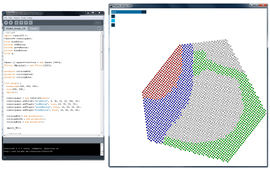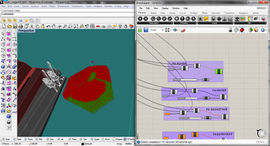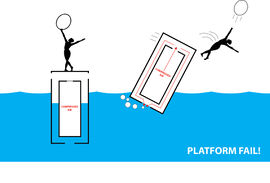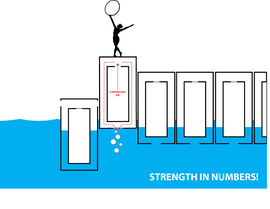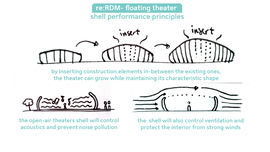project35:Performance
(Created page with "<h2> <span class="mw-headline">Introduction</span></h2> The performance of the building is defined by three elements; the seating/stage construction (interior), the protective...") |
|||
| Line 1: | Line 1: | ||
<h2> <span class="mw-headline">Introduction</span></h2> | <h2> <span class="mw-headline">Introduction</span></h2> | ||
| − | The performance of the building is defined by | + | The performance of the building is defined by two elements: |
| + | 1) the flexibility of the userinterface to control the interior of the building | ||
| + | 2) the physical building (interior/shell/landscaping) | ||
| + | |||
| + | The userinterface is explained through it's global setup and a demonstration video. The seating/stage construction (interior), the protective shell and the surrounding landscaping are reviewed on three primary aspects; structure, material and acces. | ||
| + | |||
| + | <h2> <span class="mw-headline">User interface</span></h2> | ||
| + | The theatre director will be in full control over the theatres interior. By 'painting' on a digital canvas he'll be able to assign functionality to the adjustable platforms. | ||
| + | |||
| + | '''Setup''' | ||
| + | In this project, the userinterface (in Processing) receives the global coordinates from the CAD program (Rhino+Grasshopper) and sends back the same coordinates plus functions (see figure). | ||
| + | |||
| + | <div style="height:152px; width: 850px; margin:0px; padding: 0px; padding-top: 20px; overflow: hidden;"> | ||
| + | <div style="float:left; width: 270px; height 152px; margin-right:20px; border:0px;" align="center"> | ||
| + | [[File:project35_Grasshopper_processing_model_connections_diagram.jpg|270px]] | ||
| + | </div> | ||
| + | <div style="float:left; width: 270px; height 152px; margin-right:20px; border:0px;" align="center"> | ||
| + | [[File:project35_processing_code_and_interface.jpg|270px]] | ||
| + | </div> | ||
| + | <div style="float:left; width: 270px; height 152px; margin-right:20px; border:0px;" align="center"> | ||
| + | [[File:project35_Grasshopper.jpg|270px]] | ||
| + | </div> | ||
| + | </div> | ||
| + | |||
<h2> <span class="mw-headline">Seating performance</span></h2> | <h2> <span class="mw-headline">Seating performance</span></h2> | ||
Revision as of 15:36, 19 November 2012
Contents |
Introduction
The performance of the building is defined by two elements: 1) the flexibility of the userinterface to control the interior of the building 2) the physical building (interior/shell/landscaping)
The userinterface is explained through it's global setup and a demonstration video. The seating/stage construction (interior), the protective shell and the surrounding landscaping are reviewed on three primary aspects; structure, material and acces.
User interface
The theatre director will be in full control over the theatres interior. By 'painting' on a digital canvas he'll be able to assign functionality to the adjustable platforms.
Setup In this project, the userinterface (in Processing) receives the global coordinates from the CAD program (Rhino+Grasshopper) and sends back the same coordinates plus functions (see figure).
Seating performance
The seating and stage are made up of the same dynamic components. These components are floating boxes, able to rise or sink depending on the directors compositional preferences. Also, they can move during the play. This requires the seating components to be submersed in a controlled way. Also, they should gain stabiility through connections with other components.
The cranes are an essenstial component connecting the production capabilities in the Innovatie Dok to the water, moving past the Onderzeebootloods. They can also be used to suspend either seating, roofing or stage constructions.
Shell performance
Being a cultural institution, the theater relies on funding (subsidies and investments) and ticket sales for its succes. The amount of money people are willing to spend on cultural acitvities depends mostly on their disposable income and declines during economic downturn. Subsidies also depend heavily on the state of the economy. Therefore the theater will be able to grow when the economy is strong, but remain the same when economic conditions are not so favourable. It can also grow based on special events (eg. concerts or the Rotterdam Film Festival).
Parameters which can supply the required data are:
- Gross income and part spent on cultural activities.
- Cultural subsidies available for the City of Rotterdam
- ...

